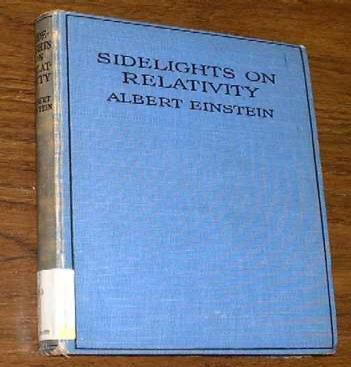Avoid a nuclear war.
Unpredictable effect might cause partial or full loss of Earth's atmosphere.
Video: https://youtu.be/q1eLkYTD-bk
MEMORANDUM
To Save Our Civilization from Self-Destruction
Dr. Stoyan Sarg Sargoytchev
Director of the INSTITUTE FOR SPACE, MATTER, AND ENERGY FIELDS
at the "EARTH CIVILIZATION AND THE UNIVERSE" Society
Our civilization is at a critical moment in its existence. Why is this not foreseen by politicians and world institutions? The reason lies in the wrong idea of outer space, which does not allow to predict the most dangerous effect in the event of a nuclear war: the loss of part or all of the Earth's atmosphere. The effect can be triggered in one region of the atmosphere and very quickly affect the entire Earth's atmosphere. This will end life on Earth, both human and animal. What is this effect? Studies of tornadoes, both in Earth's atmosphere and on the Sun, show signs of an antigravity effect.
A sign of an antigravity effect is also observed in nuclear tests in the atmosphere. This is evidenced by numerous declassified films of nuclear tests carried out in the 1960s and 1970s. These are available on youtube (see the collection by Michelle Starr (2017)). An anti-gravity effect was observed during the first few seconds of the explosion. Note how a column of dust rises from the ground below the explosion, pierces the much hotter explosion zone where the temperature and pressure are much greater, and continues upward. The snapshots from a declassified movie shown below show the development of an anti-gravity effect during the first few seconds. Several tornadoes are also triggered during this time, which is also a sign of an anti-gravity effect.

Fortunately, no simultaneous nuclear tests have been conducted in the atmosphere, but even single super-powerful thermonuclear explosions can prove fatal. Contemporary science cannot predict this effect, which is inexplicable from the point of view of the accepted idea of empty space. Therefore, it is believed that the height of the nuclear mushroom cannot exceed the Earth's atmosphere. The real physical essence is that the antigravity effect is not an atmospheric phenomenon, but an effect of the etheric medium, i.e. not limited by the atmosphere. This explains why the tornado effect seen on the Sun ejects a huge amount of mass despite the Sun's enormous gravity. A similar effect caused by nuclear explosions in the Earth's atmosphere can eject part or all of the Earth's atmosphere.
There is scientific evidence that simultaneous nuclear explosions in the atmosphere can cause such an effect. Research by the American scientist John Brandenburg shows that Mars lost its atmosphere in the distant past as a result of two simultaneous super-powerful explosions of unknown origin. It has been scientifically proven that once Mars had rivers, lakes and oceans, but currently its atmosphere is 0.9% of Earth's and the water has evaporated and disappeared into space. Examining the isotopic content of meteorites from Mars, John Brandenburg discovered a ratio of isotopes found only in powerful thermonuclear explosions. At a 2015 science conference sponsored by the Lunar and Planetary Institute and NASA, he reported "Evidence for Large Anomalous Nuclear Explosions in Mars' Past". The detailed analysis is also presented in his monograph The Death of Mars. On the other hand, there is an official but rather unconvincing hypothesis that the reason Mars lost its atmosphere was the solar wind. In terms of mass and radius, the planet Mars is similar to Earth. At the same time, Mars is further from the Sun than the Earth, and Venus is closer. How then would Venus' atmosphere be about 90 times denser than Earth's, while Mars' atmosphere is less than 1% of Earth's? John Branderburg's conclusion, supported by scientific arguments, is much stronger than the solar wind hypothesis. Moreover, his conclusion is explained by the antigravity effect mentioned at the beginning. This effect is based on scientific arguments presented in the research and theoretical work of Dr. Stoyan Sarg.
Stoyan Sarg Sargoytchev has worked for 37 years in scientific institutions and is familiar with numerous inconsistencies in theoretical physics that reflect to separate areas of physics. Problems of a fundamental nature are not only not discussed, but even opinions of famous scientists of the past are distorted. The most striking case is the silence on Albert Einstein's opinion about the physical vacuum, which is of a fundamental nature. After the creation of general relativity in 1920, he published the book Sidelights on Relativity [1] in which he explicitly stated on page 23:
To recapitulate, we can say that according to general relativity, space has physical properties; in this sense, therefore, ether exists. According to general relativity, space without aether is unthinkable; for in such a space there would not only be no propagation of light, but no possibility of existence for the standards of space and time. This opinion of his, which is also expressed in other texts from the above-mentioned book, is also preserved in an original film document: https://www.youtube.com/watch?v=EtWfLQbJ_To


In his General Theory of Relativity, Einstein introduced the curvature of space, an effect that has been experimentally confirmed but is difficult to explain if space is empty. This is the reason why he took the view of the existence of an ethereal substance. But then the red spectral shift of the galaxies may not be of the Doppler type, and this also leads to the conclusion that the universe is not expanding. Einstein therefore rigged the initially proposed parameter called the cosmological constant, calling it his biggest mistake. However, the cotemporary scientific community ignores these fundamental opinions and continues to support the hypothesis of an expanding universe, despite the many problems in modern cosmology from a theoretical point of view. One of them is that in distant galaxies the spectral redshift shows a speed greater than that of light, and the pseudoscientific explanation is that the "empty space" was also expanding. The famous discoverer of the spectral redshift in galaxies, Edwin Hubble, never claimed that it was Doppler-type. Once the existence of the aetheric medium is accepted, the galactic redshift is no longer Doppler but cosmological. The recent observations of the most powerful James Web telescope also put doubts about the Big Bang theory. The observation confirms the concept of the stationary universe developed by Stoyan Sarg in his treatise mentioned below. The Universe is not expanding but infinite in time. This corrects a number of problems in cosmology and leads to the assumption that very advanced and more advanced civilizations than ours may exist.
To solve the fundamental problem of space, the author Stoyan Sarg analyzed numerous experiments accumulated over the last 120 years. Thus he arrived at an original physical model of space that had not been proposed and explored before. It completely coincides with the concept of the existence of an etheric medium predicted by both ancient Greek scientists and titans of science such as Newton, Faraday, Maxwell, Lord Thompson, Einstein and Tesla. The proposed model not only reveals the missing link between the microcosmos and the universe, but also allows understanding the relationship between classical mechanics, quantum mechanics, relativity theory and gives a clear idea of what determines the speed of light. The treatise he published in 2001 is called Basic Structures of Matter - Supergravitational Unified Theory, (BSM-SG) [2,3,4,5,6]. Using the proposed theoretical model, all physical interactions are completely logically understandable. On the one hand, it opens a new window of knowledge to the world of the microcosmos and the infinite Universe, as well as potential technological breakthroughs in a number of fields. On the other hand, it makes it possible to understand some dangerous consequences of simultaneous nuclear explosions in the atmosphere or ocean.
When in 2015 the author published in the Foreign Policy Journal the article "The Unknown Danger of a Nuclear Apocalypse", the possibility of war in Europe seemed like an illusion. With today's technological capabilities, a third world war will not only be the last, but may also completely destroy the conditions for life on Earth. Even if the Earth's atmosphere is not lost, in the event of a nuclear war, the most vulnerable will be the coastal areas of the continents, which can be hit by huge tsunami waves. In this sense, the author wants to emphasize not only the danger, but also to cool those who make fateful decisions leading to confrontation and escalation of military conflicts. Relying on his many years of scientific activity, Dr. Stoyan Sarg Sargoytchev bets his scientific reputation on the correctness of his conclusions. More details about his scientific activity can be found on the website: www.helical-structures.org, where links to his publications: books, articles, conference reports, videos and experiments are indicated.
About the author:

Stoyan Sargoytchev (Stoyan Sarg Sargoytchev) is a Scientific Advisor to the Board of Directors
of the World Institute for Scientific Research, USA. http://instituteforscientificexploration.org/ise-directors-advisors/
Additional online sources:
References:
1. A. Einstein, Sidelights on Relativity, translated by: G. B. Jeffery and W. Perret, Methuen & Co. London, (1922); republished unabridged and unaltered: Dover, New York, (1983)
2. S. Sarg, New approach for building of unified theory,http://lanl.arxiv.org/abs/physics/0205052 (May 2002)
3. S. Sarg ©2001, Basic Structures of Matter, monograph, http://www.helical-structures.org archived in: http://www.nlc-bnc.ca/amicus/index-e.html (First edition, ISBN 0973051507, 2002; Second edition, ISBN 0973051558, 2005), (AMICUS No. 27105955), LC Class no.: QC794.6*; Dewey: 530.14/2 21
4. S. Sarg, A Physical Model of the Electron according to the Basic Structures of Matter Hypothesis, Physics Essays, vol. 16 No. 2, 180-195, (2003)
5. Stoyan Sarg, Beyond the Visible Universe, Helical Structures Press, 2004. ISBN 0973051531
6. Stoyan Sarg, Basic Structures of Matter –Supergravitation Unified Theory, Trafford Publishing, 2006, ISBN 1412083877
7. Books review in "Physics in Canada,", v. 62, No. 4, July/Aug, 2006 on Stoyan Sarg book: Basic Structures of Matter –Supergravitation Unified Theory, Trafford Publishing, 2006, ISBN 1412083877
8. Stoyan Sarg, Field Propulsion by Control of Gravity, Theory and Experiments, Amazon.com, (2008), ISBN 978-1448693085
9. SARG gravito-inertial effect (Stimulated Anomalous Reaction to Gravity) reported at the 27th Annual Meeting of the Society for Scientific Exploration (SSE), June 25-28, 2008, Boulder, CO. (Video-record in SSE webpage).
10. www.academia.edu/63917317/A_new_Physics_with_a_different_vision_about_the_Universe_and_our_origin
